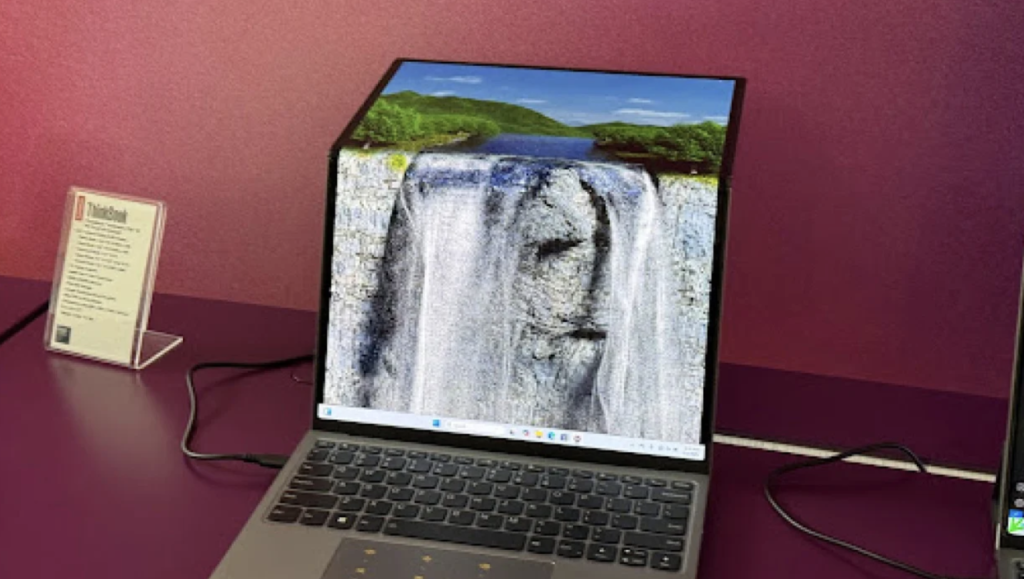Lenovo is no stranger to pushing the boundaries of laptop design, and its latest concept, codenamed Flip, is yet another daring leap into the future of flexible-screen laptops. Building on the technology used in the ThinkBook Plus Gen 6 Rollable, the Flip is a fascinating remix of rollable and flexible display components, bringing a fresh approach to the ever-evolving world of shape-shifting PCs.
A Laptop That Bends to Your Needs
The Lenovo Flip is designed to redefine how we interact with laptops, featuring a unique flexible OLED display that can be adjusted to different form factors. Whether you need a traditional clamshell experience, a tent mode for presentations, or a fully flat tablet-style setup, the Flip adapts seamlessly to your workflow.

Image credit: Sam Rutherford
Taking cues from the ThinkBook Plus Gen 6 Rollable, the Flip incorporates a rollable display mechanism, allowing users to expand or contract the screen as needed. Imagine starting with a compact 13-inch display and then extending it to a larger workspace when multitasking or watching videos. It’s the kind of futuristic flexibility that makes tech lovers giddy.
A Remix of Innovation
While the Flip takes inspiration from its rollable sibling, it’s not just a copy-paste job. Lenovo has fine-tuned the concept with improved hinge mechanics, ensuring a smoother transition between modes, and a more durable flexible OLED panel to withstand frequent transformations. The keyboard and trackpad remain traditional, providing a familiar typing experience while the display bends and shifts above it.
Under the hood, the Flip is expected to feature Intel’s latest processors, high-speed SSD storage, and a generous amount of RAM, making it a powerhouse for productivity. Add to that a versatile stylus, and you have a device that blurs the line between a laptop and a high-end digital canvas.
Challenges and Possibilities
Of course, the concept isn’t without its challenges. Flexible screens, while exciting, still have durability concerns, and the cost of implementing such technology can make devices like the Flip a premium offering. However, Lenovo has been refining its flexible tech for years, and with each iteration, these concepts move closer to becoming mainstream.
One notable concern is hinge stability—for a screen this tall, the hinge may struggle to keep everything steady, causing the display to wobble with even a light tap. Some Lenovo promotional images suggest a kickstand could help, but the model tested lacked this, making stability a potential issue.
A bigger challenge lies in screen protection when closed. When collapsed into a clamshell, the way the screen folds leaves the flexible display exposed to potential scratches from nearby objects. While a form-fitting laptop sleeve could help, it still feels like a risky compromise, especially for those familiar with the fragility of foldable displays. This design limitation might even be why Lenovo prioritized the ThinkBook Rollable over the Flip for an official release.
For now, the Lenovo Flip remains an experimental take on the future of computing, but if history has taught us anything, it’s that Lenovo loves turning bold ideas into reality. Could this be the next big thing in laptop design? Time will tell, but one thing’s for sure—Lenovo isn’t afraid to keep flipping expectations.


